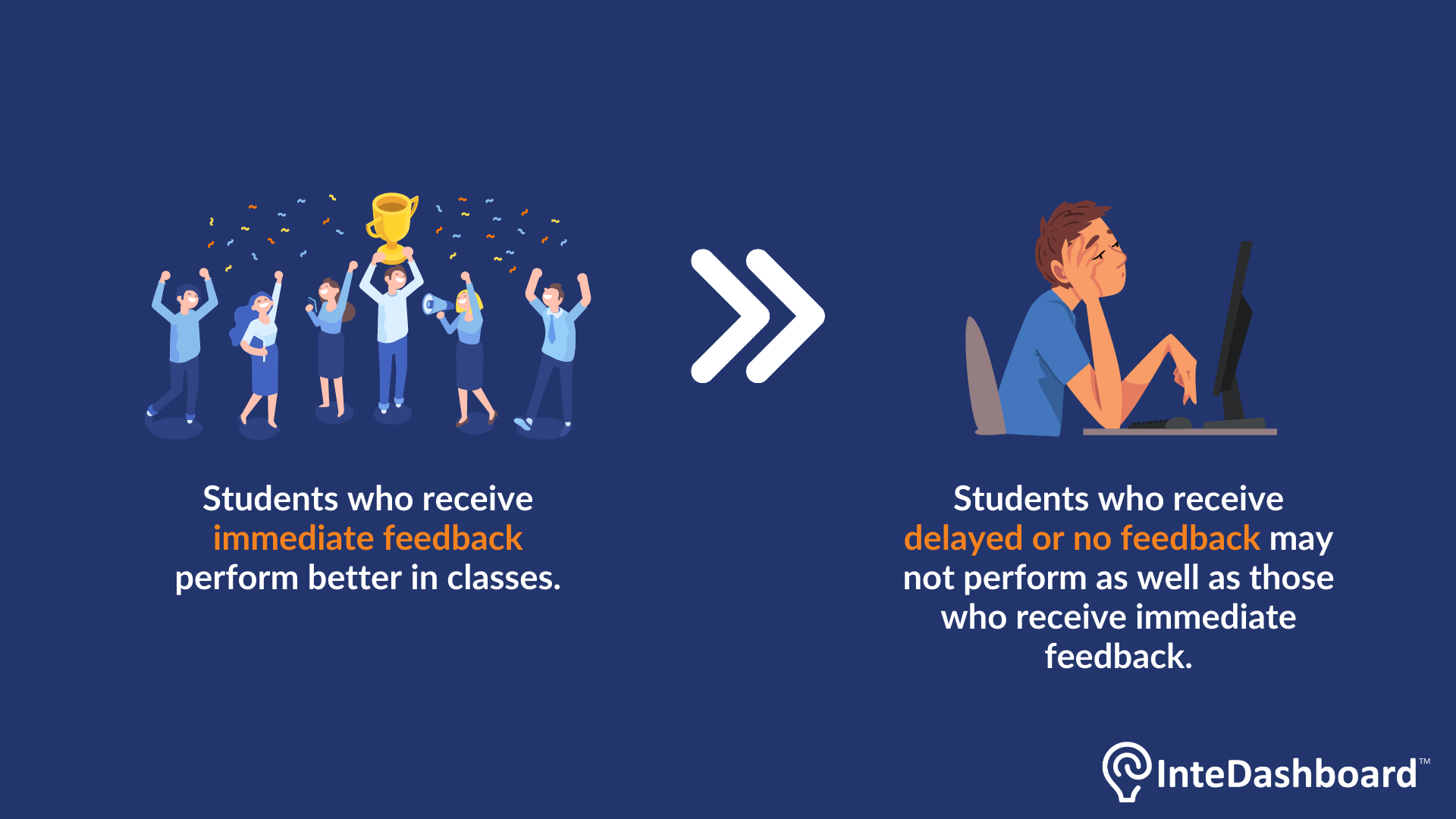Educators are always searching for teaching strategies that can help students learn effectively.
For example, educators might want to encourage active, real-world learning or engage students in reflection. However, one proven method for effective learning is ensuring students receive immediate feedback.

Immediate feedback is an inherent component of the Team-based Learning (TBL) process, provided during the IRAT and TRAT. Answers are discussed immediately after completion of the TRAT, with clarification provided by the facilitators (Burgess, Diggele, Roberts, and Mellis, 2020).
Here are five reasons why immediate feedback is an effective teaching strategy:
- Students who receive immediate feedback tend to outperform those who receive delayed or zero feedback.

Immediate feedback helps to correct misconceptions in student learning as soon as the student makes a mistake. However, when students receive delayed or zero feedback, they might reinforce misconceptions by making the same mistake several times without being corrected (Kehrer, Kelly, and Heffernan, 2013).
In a study done by Attali and Powers (2009), they found that participants who received immediate feedback could correct many of their initial incorrect answers, thus resulting in higher revised scores than those who received delayed or no feedback.
Stuart (2004) also found comparable results in his study – participants who received immediate feedback had outperformed the other groups who received delayed or zero feedback.
- Facilitators can devote more time to covering areas that students need more practice in and less time to areas where immediate feedback has indicated that student learning occurred.
 When students receive immediate feedback, they can master a skill more quickly. Educators would be able to devote class time more efficiently to other skills that students have yet to master (Stuart, 2004).
When students receive immediate feedback, they can master a skill more quickly. Educators would be able to devote class time more efficiently to other skills that students have yet to master (Stuart, 2004).
Additionally, according to a study done by Attali and Powers (2010), participants with immediate feedback took less time to complete subsequent tests as they could recall the class content better. - Students will experience deepened learning through receiving immediate feedback.
 During the TRAT, students discuss and come to a consensus on their team answers. They challenge one another’s underlying assumptions to get to the right answer. The correct answers are revealed immediately upon submitting their team answers (Rotgans, Rajalinjam, Ferenczi, and Low-Beer, 2019). In this process, they can understand why an answer is correct and why the other answers are incorrect. Thus, students can experience deepened learning and become more familiar with the learning material and concepts.
During the TRAT, students discuss and come to a consensus on their team answers. They challenge one another’s underlying assumptions to get to the right answer. The correct answers are revealed immediately upon submitting their team answers (Rotgans, Rajalinjam, Ferenczi, and Low-Beer, 2019). In this process, they can understand why an answer is correct and why the other answers are incorrect. Thus, students can experience deepened learning and become more familiar with the learning material and concepts.
Additionally, in team-based learning, students need to answer the same set of questions in IRAT and TRAT - this allows the answers to stay in the students’ memory for a longer time. Recognizing answers is a more effective learning technique than getting the students to memorize the learning material and concepts. - Immediate feedback improves student engagement.

When students receive immediate feedback, they become more engaged in the class (Epstein, Epstein, and Brosvic, 2001). For example, IF-AT forms require students to scratch off boxes to find the hidden star, which denotes the correct answer - this makes the class more fun and interactive!
Furthermore, during the TRAT debrief, the facilitator can improvise on his facilitation technique by asking the teams who got the answer correct during the first attempt to explain to the remaining class members how they did so. This way, the benefits of the immediate feedback technique can help the entire class learn better. - Immediate feedback allows facilitators to review the quality of the questions.

The RAT process in TBL is used to stimulate the understanding of key concepts, promote comprehension, and build critical-thinking skills. Poor questions can stifle learning by creating confusion, intimidating students, and limiting creative thinking (Chin, 2007).
InteDashboard allows facilitators to view real-time data on their teacher dashboard, including the number of attempts on each question. The PBCC metric allows teachers to gauge the quality of the question by looking at the discrimination factor and see if the question is structured appropriately. Facilitators can use this opportunity to review the quality of the questions and improve on them for future classes.
Facilitators are also able to receive clarification requests from teams in real-time. Thus, facilitators can quickly clarify any doubts that students have and enhance their overall learning experience.
Immediate feedback is truly the key to effective learning – and tools like InteDashboard or IF-AT forms can help facilitators implement the immediate feedback technique effectively and make classes more engaging for students!







